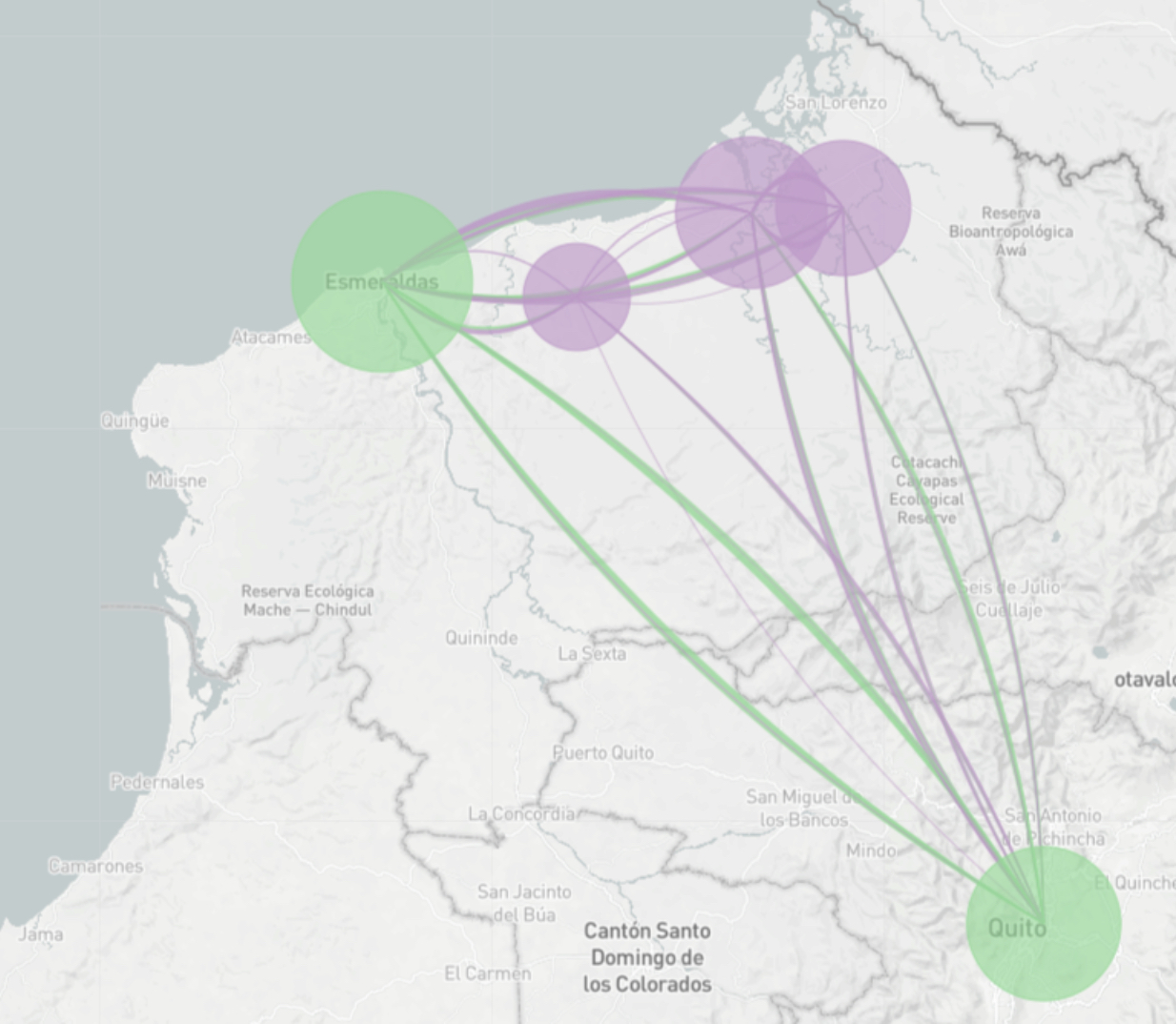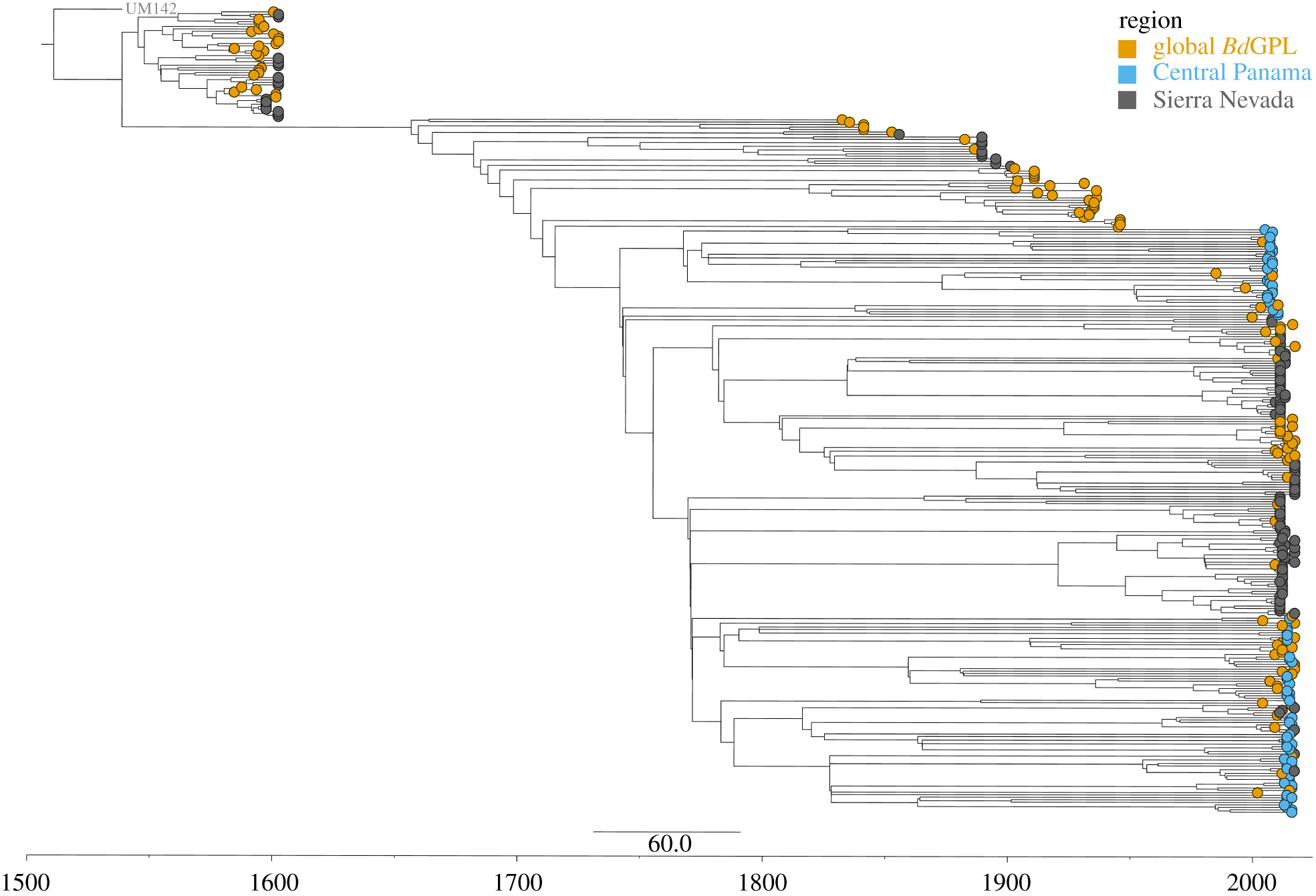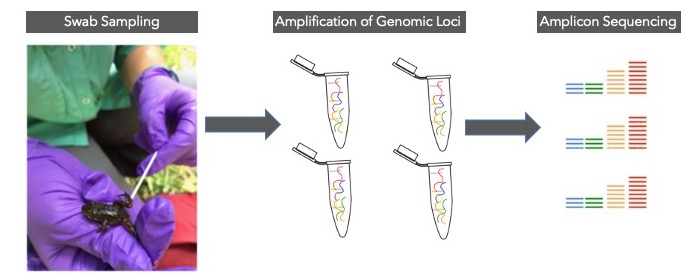projects
Human movement & pathogenic E. coli
Human movement influences the epidemiology of pathogens. Increased rates of travel, urbanization, and environmental change have rapidly increased the connectedness of people, communities, and ultimately the pathogens they harbor. Using fine-scale genomic data of ciruclating E. coli isolates, I am applying bacterial phylogenomics to investigate the role of human travel on the spread of pathogenic strains across rural and urban communities in northern coastal Ecuador. Understanding which communities are sources of enteric pathogens has important public health implications including where to prioritize interventions.
Relevant products

Spread & emergence of amphibian chytrid fungus
Amphibians are declining worldwide. One of the major drivers of amphibian declines is the global spread of the disease chytridiomycosis, caused by the fungal pathogen Batrachochytrium dendrobatidis or Bd. Two regions – the Sierra Nevada of California and Central Panama – provide grim examples of the devastating potential of Bd. Field data suggest a similar pattern of recent disease emergence in both regions. However, pathogen genetics reveals a more complex picture. We genotyped hundreds of amphibian skin swabs and found that Bd in Panama emerged recently, but Bd in California has a much older history. Our work rewrites key parts of the Bd story and highlights the importance of genetic epidemiology to understand disease impacts on global biodiversity.
Relevant products
- Divergent regional evolutionary histories of a devastating global amphibian pathogen. Proc. R. Soc. B
- BdGPL nextstrain build
- Unlocking the story in the swab: A new genotyping assay for the amphibian chytrid fungus Batrachochytrium dendrobatidis. Molecular Ecology Resources

Applied conservation for an endangered amphibian
In the Sierras Nevada of California, mountian yellow-legged frogs (Rana sierrae/muscosa) were once abundant across the landscape, but have disappeared from more than 90% of their historical range. Major factors including introduced non-native fish and the chytridiomycosis disease that have led to precipitous declines of frog populations. Consequently, these frogs are now listed under the U.S. Endangered Species Act and are the focus of recovery efforts. However, limited knowledge of their population genetics has made long-term conservation planning difficult. My work focused on leveraging archived skin swabs and tissue samples to generate robust genomic data to assist in active recovery and conservation. By providing a population genetic framework, we can recommend specific management actions for repopulating frogs back into their native range.
Relevant products

Novel methods in generating -omics data
Throughout my career I have been involved in developing new ways to sample, track, and surveil using genetic methods. Examples include building non-invasive genetic “tags” in marine mammals, using archived amphibian skin swabs for pathogen surveillance, and using amphibian skin swabs to target parts of frog genomes for conservation and recovery of populations.
Relevant products
- Unlocking the story in the swab: A new genotyping assay for the amphibian chytrid fungus Batrachochytrium dendrobatidis. Molecular Ecology Resources
- WisePair: a computer program for individual matching in genetic tracking studies. Molecular Ecology Resources
